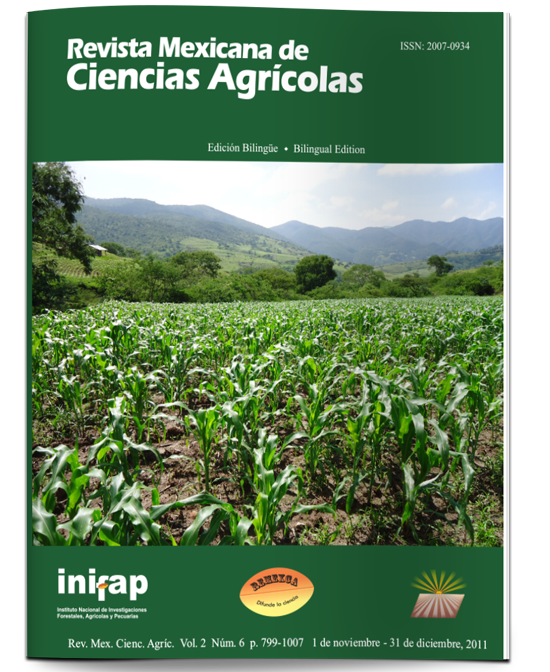GENE FLOW BETWEEN MAIZE COMMERCIALIZED BY DICONSA AND NATIVE POPULATIONSAT THE MIXTECA OF PUEBLA
DOI:
https://doi.org/10.29312/remexca.v2i6.1596Keywords:
Zea mays L., f lowering dynamics, native maize, transgenic maizeAbstract
Several papers have noted that, a possible source of transgenes detected in native maize in Mexico, could have been the grains from Diconsa’s rural stores; which produced plants that released pollen into the environment. Up to this date, there are no papers which would help to decide on the validity of such assertion. This research was conducted aiming to determining whether if the plants from grains expended by Diconsa’s rural stores can be adapted to the Mixteca’s conditions, if they achieve anthesis and if this stage coincides with the female’s flowering of the native maize of that region. 23 maize samples from Diconsa’s rural stores, 46 native populations and three commercial controls were evaluated during 2008, in two locations through a lattice design 8∗9 with two replicates. The morphological, agronomic variables and f lowering dynamics were recorded. The data analysis with univariate and multivariate techniques revealed that, the maize populations derived from maize grain from Diconsa’s rural stores was a set morphologically and agronomically different to that formed by the native populations; their plants reached anthesis and its flowering periods overlapped with those of the native populations. This shows that, in the Mixteca of Puebla, gene flow between introduced materials and native maize populations is quite possible, representing an effective way to spread transgenes if these are in the pollen grains.
Downloads
Downloads
Published
How to Cite
Issue
Section
License
The authors who publish in Revista Mexicana de Ciencias Agrícolas accept the following conditions:
In accordance with copyright laws, Revista Mexicana de Ciencias Agrícolas recognizes and respects the authors’ moral right and ownership of property rights which will be transferred to the journal for dissemination in open access. Invariably, all the authors have to sign a letter of transfer of property rights and of originality of the article to Instituto Nacional de Investigaciones Forestales, Agrícolas y Pecuarias (INIFAP) [National Institute of Forestry, Agricultural and Livestock Research]. The author(s) must pay a fee for the reception of articles before proceeding to editorial review.
All the texts published by Revista Mexicana de Ciencias Agrícolas —with no exception— are distributed under a Creative Commons License Attribution-NonCommercial 4.0 International (CC BY-NC 4.0), which allows third parties to use the publication as long as the work’s authorship and its first publication in this journal are mentioned.
The author(s) can enter into independent and additional contractual agreements for the nonexclusive distribution of the version of the article published in Revista Mexicana de Ciencias Agrícolas (for example include it into an institutional repository or publish it in a book) as long as it is clearly and explicitly indicated that the work was published for the first time in Revista Mexicana de Ciencias Agrícolas.
For all the above, the authors shall send the Letter-transfer of Property Rights for the first publication duly filled in and signed by the author(s). This form must be sent as a PDF file to: revista_atm@yahoo.com.mx; cienciasagricola@inifap.gob.mx; remexca2017@gmail.
This work is licensed under a Creative Commons Attribution-Noncommercial 4.0 International license.



